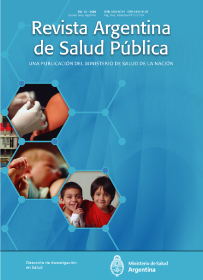Nutritional quality of food advertised on private free-to-air television channels of Buenos Aires City
Keywords:
Advertising, Food, Nutritional Quality, Television, ArgentinaAbstract
INTRODUCTION: The food industry uses television as a way of promoting its products. The objective was to evaluate the frequency and nutritional quality of food advertised on private free-to-air television channels in the Autonomous City of Buenos Aires. METHODS: A descriptive and cross-sectional study was conducted. Food advertisements on private free-to-air television channels were analyzed. They were recorded during weekdays and weekends from 8 am to 8 pm in August and September 2018. Nutritional quality was evaluated with the nutritional profiling system (NPS) used in Chilean Law N° 20606. RESULTS: The study analyzed 220 hours of television programming. A total of 484 food advertisements were identified, representing 12.8% of all advertisements, with a frequency of 2.2 ads per hour of programming. Sweets showed the highest frequency (28% of the ads), followed by sweet cookies (17%) and dehydrated soups (7%). According to the NPS, 55% of the food exceeded the energy limit, 56% the total sugars limit, 57% the saturated fat limit, and 20% the sodium limit. DISCUSSION: Food advertisements occupied one-tenth of the advertising space. More than half exceeded the limit of energy, total sugars and saturated fats according to the Chilean profiling system.
Downloads
Downloads
Published
How to Cite
Issue
Section
License

This work is licensed under a Creative Commons Attribution-NonCommercial-ShareAlike 4.0 International License.


